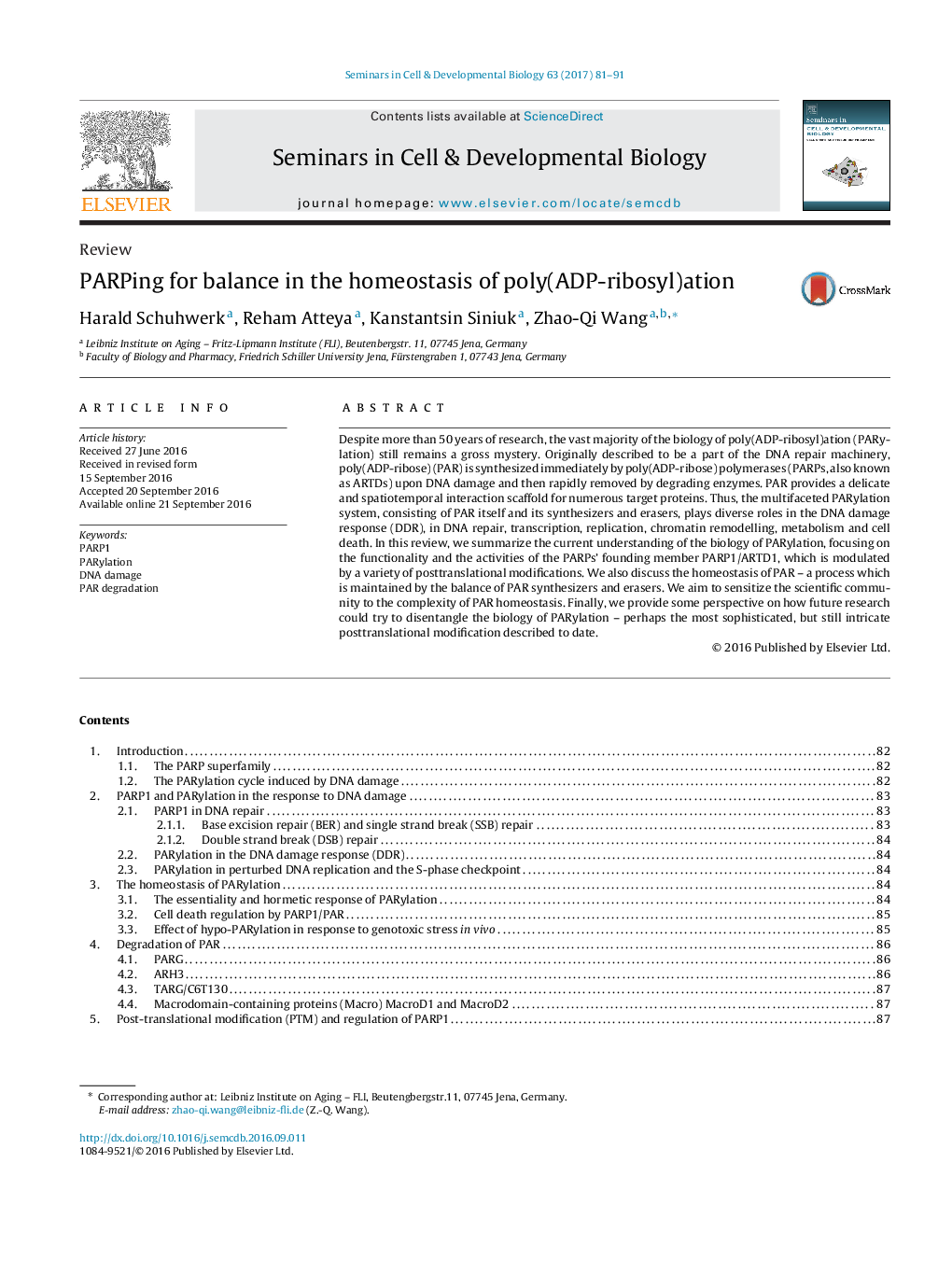| Article ID | Journal | Published Year | Pages | File Type |
|---|---|---|---|---|
| 5534952 | Seminars in Cell & Developmental Biology | 2017 | 11 Pages |
Despite more than 50 years of research, the vast majority of the biology of poly(ADP-ribosyl)ation (PARylation) still remains a gross mystery. Originally described to be a part of the DNA repair machinery, poly(ADP-ribose) (PAR) is synthesized immediately by poly(ADP-ribose) polymerases (PARPs, also known as ARTDs) upon DNA damage and then rapidly removed by degrading enzymes. PAR provides a delicate and spatiotemporal interaction scaffold for numerous target proteins. Thus, the multifaceted PARylation system, consisting of PAR itself and its synthesizers and erasers, plays diverse roles in the DNA damage response (DDR), in DNA repair, transcription, replication, chromatin remodelling, metabolism and cell death. In this review, we summarize the current understanding of the biology of PARylation, focusing on the functionality and the activities of the PARPs' founding member PARP1/ARTD1, which is modulated by a variety of posttranslational modifications. We also discuss the homeostasis of PAR - a process which is maintained by the balance of PAR synthesizers and erasers. We aim to sensitize the scientific community to the complexity of PAR homeostasis. Finally, we provide some perspective on how future research could try to disentangle the biology of PARylation - perhaps the most sophisticated, but still intricate posttranslational modification described to date.
